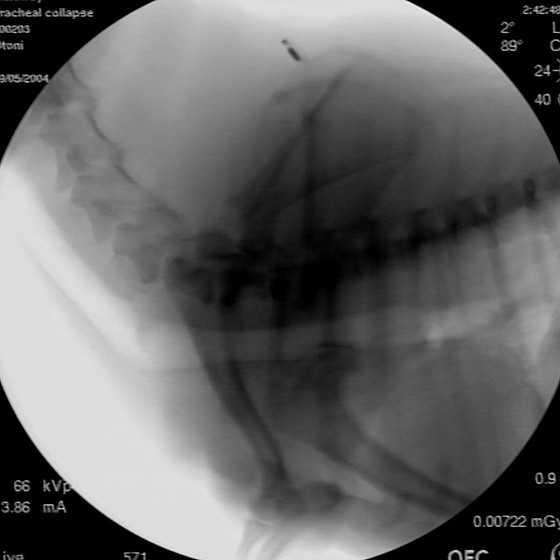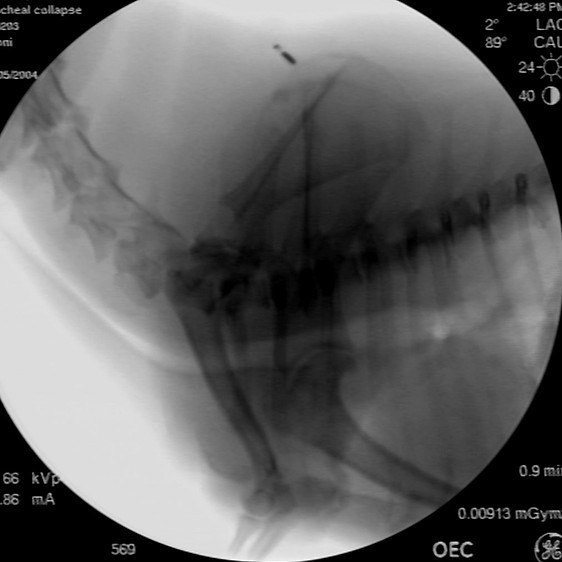Fluoroscopic airway diagnostics
Fluoroscopy can be a very important diagnostic tool for airway disease. It can help evaluate patients for bronchial collapse, tracheal collapse, and epiglottic retroversion, among others. It not only helps to obtain a definitive diagnosis but more importantly, it aids in determining the severity of the changes.
Dog with tracheal collapse

Depending on the phase of breathing in which radiographs are taken, you may not identify a patient with tracheal collapse.
The patient above has severe tracheal collapse that was not noted on radiographs initially.
This is the same patient, but on a different phase of respiration. Now, you can see the narrowed trachea.


This is the same patient, but on a different phase of respiration. Now, you can see the even more narrowed trachea.
The dog on this video apparently has tracheal collapse.

Epiglottic retroversion
On closer evaluation, the tracheal collapse is secondary to epiglottic retroversion, not because of weakening of the cartilage. Please take a closer look at the neck region (laryngeal region).
In patients with epiglottic retroversion, the epiglottis flips back into the larynx during inspiration, closing the larynx and making it more difficult to breath in. This leads to increased negative pressure in the trachea and subsequently collapse of the trachea.

Endoscopic evaluation of epiglottic retroversion
